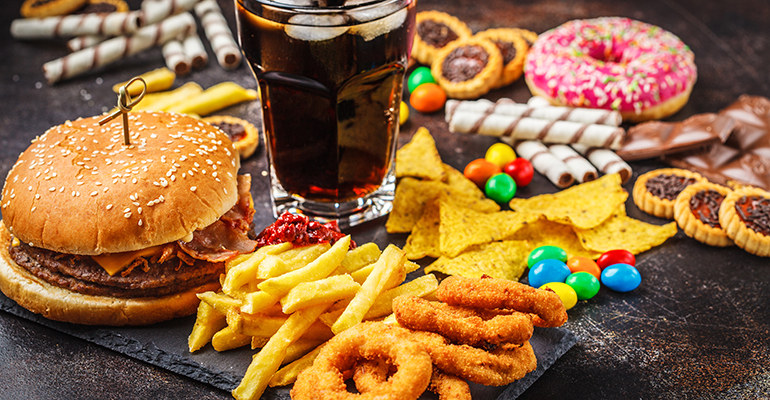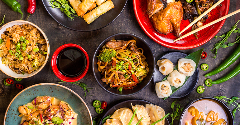Study: Two-thirds of US children’s calories come from ultra-processed foods
1 Sep 2021As of 2018, youth in the U.S. consume 67% of their calories from ultra-processed foods, according to a new study published in JAMA. Between 1999 and 2018, there was a jump of 5.6 percentage points in the number of calories coming from foods like cookies, frozen meals and other packaged goods.
This study followed U.S. youth aged 2 to 19 for 20 years to delve into individual’s diets, and researchers found that ready-to-heat frozen and refrigerated meals accounted for the largest overall share of calories in the diets of those eating ultra-processed foods. Over the course of the study, this figure jumped from 2.2% or calories to 11.2%. Salty and sweet snacks only grew from 10.7% to 12.9% of the overall share of calories. Interestingly, the consumption of sugar-sweetened beverages dwindled from 10.8% of the share of calories in the average child’s diet to 5.3%. Processed fats from condiments and sauces also dropped from 7.1% to 4.0% during the period of the study.

Additionally, the study uncovered that the increases in ultra-processed food consumption were not equal across groups. Black youths in the U.S. experienced the largest increase in the share of calories coming from ultra-processed foods with the percentage of this group’s calories jumping from 62.2% to 72.5%. Mexican American youths saw the second largest increase in overall calorie consumption from ultra-processed foods with a jump from 55.8% to 63.5%. Non-Hispanic White youths experienced the smallest increase with overall energy consumption rising from 63.4% to 68.6%. Researches noted that other ethnic groups were not categorized because there was not a sufficient sample size to draw conclusions.
At the same time that calorie consumption of ultra-processed foods surged, researchers noted a corresponding drop in calories from unprocessed or minimally processed foods. The share of calories consumed from these sources declined from 28.8% to 23.5%.
These findings are unsurprising in a country where the term “kid food” elicits images of colorful, processed and packaged treats. And it is not just in parents’ imaginations that this type of kid food has worked its way into the cultural consciousness of the U.S. and become a common choice to feed children. Over the past two decades, nearly the same time period during which this study was conducted, there has been a steady rise in the rate of youth obesity.
What is interesting, is that these findings coexist alongside a surge in demand from Americans for better-for-you options that take into account health and wellness. This stark contrast between what consumers are asking for and what they are actually eating can in large part be divided along the similar socio-economic and racial lines that this study underscored. Better-for-you options tend to be pricier, therefore limiting access for families and individuals that are not able to afford the upcharge on healthier packaged goods.
The same pattern can be seen in unprocessed, organic products. A Nielsen report found organic sales increased more than $925 million, but a 2019 report from the research group NMI found that despite increasing sales, organic products are struggling to penetrate new markets. The NMI study found that devoted organic consumers were from households with higher incomes and children under the age of 18.
With the vast majority of children now consuming large quantities of ultra-processed foods, it may be time for stakeholders to look into the long term costs of this dietary choice. Childhood obesity has been linked not only to weight gain but also to diabetes, heart disease, cancer and early death.
Related news

Chinese food brand wants to give customers ‘the full experience’
16 Dec 2022
Food brand Xiao Chi Jie is revamping Chinese cuisine for the modern American consumer. The Washington-based company sells regional Chinese specialties like soup dumplings, noodle kits, and barbeque skewers direct-to-consumer in the US.
Read more
Regulations spur healthy snacking in Europe
15 Dec 2022
Healthy snack demand is on an upward trajectory in Europe, fuelled by products attaching health halos to their products, according to latest figures by Euromonitor – but regulations may be the real driver.
Read more
Could the EU-Mercosur trade deal be revived?
14 Dec 2022
The re-election of Luiz Inácio da Silva, or Lula, as president of Brazil has prompted speculation that the free-trade agreement between the EU and South American Mercosur bloc could be revived – but the European farming sector has concerns.
Read more
Novozymes and Chr. Hansen to merge
13 Dec 2022
Danish enzyme suppliers Novozymes and Chr. Hansen are to merge in a strategic alliance that will "show the world the true power of biosolutions", according to the CEO of the continuing company, Novozymes.
Read more

Could menopause-supporting products be the next big opportunity?
13 Dec 2022
As supplement brands launch products to relieve the symptoms of menopausal women such as nutraceutical gummies, the unmet needs of this group is attracting government attention in the UK.
Read more
Plant-based fish and seafood launches around the world
12 Dec 2022
From pea protein-based prawns to microalgae-based tuna alternatives, plant-based alternatives to fish and seafood are on the rise around the world.
Read more
Editors’ choice: Our roundup of the most innovative sweets, snacks and bakery products
9 Dec 2022
The sweets, snacks, and bakery categories are an exciting area, full of fresh and innovative products which are constantly adding meaningful value to the sector.
Read more
Functional food in Japan centres on health and proving claims
8 Dec 2022
The latest Japanese functional food and drink trends put health and product efficacy firmly on the production agenda for new releases.
Read more
Swedish food agency: One in 10 coffee brands contain excess acrylamide
7 Dec 2022
New findings from the Swedish Food Agency have revealed three of 29 coffee products sampled contained acrylamide above limits, reinforcing the link between levels and degree of roasting.
Read more
‘Super nut’? Indonesia’s ‘best kept secret’ wins EU novel food approval
6 Dec 2022
A previously obscure, nutrient-rich Indonesian nut is set to hit European shelves after winning EU novel foods approval that could also help protect under-threat kenari forests on the archipelago.
Read more